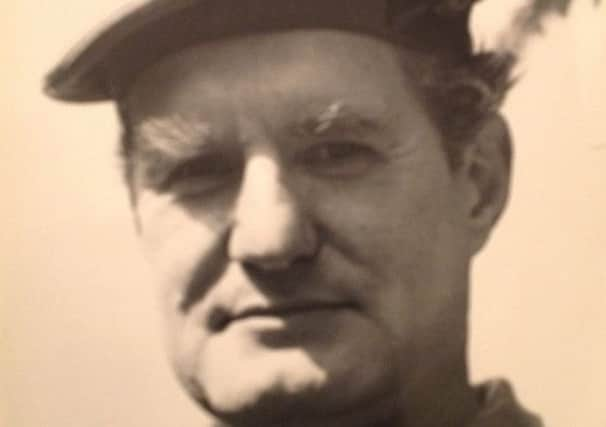Obituary: Lt General Sir Robert Richardson KCB CVO CBE, soldier


On the morning of 17 March, 1970, the then Commanding Officer of the First Battalion of the Royal Scots, Lt Colonel Robert, “Bob” Richardson, set off to walk down the Falls Road in Belfast from his headquarters at the Springfield Road RUC station. He was accompanied by his Regimental Sergeant-Major, his signals sergeant and the battalion’s Pipe-Major, who took his pipes to play on their short journey to the Long Bar in Leeson Street.
Long since gone, this belonged in 1970 to the Leneghan family whose daughter, Mary McAleese, would much later become the Irish president. A police officer had mentioned that it was St Patrick’s Day and Lt-Col Richardson decided he would observe it with a drink in a popular venue where his presence would be a gesture of goodwill to the nationalist population of the area.
Advertisement
Hide AdAdvertisement
Hide AdSome republicans were not so sure and even warned of a bloodbath. None took place, though communal tension was rising at the time. The bar filled up, the Royal Scots party bought people drinks and raised their own glasses to Ireland’s patron saint while delighted children gathered outside to see and hear the Pipe-Major playing. Bob Richardson admitted that, in case of any trouble, he had deployed a platoon of his men close to the Long Bar and that, after drinking up, he and his party moved back up the Falls Road at a rather brisker pace than they had gone down it.
It would be the last drink any British officer would have in the Long Bar which the Leneghan family had to give up as sectarian violence took hold.
The amusing and self-effacing way in which Bob Richardson told me this story five years ago convinced me and my co-author, Dr Andrew Sanders, that we should use it on the opening page of our book Times of Troubles: Britain’s War in Northern Ireland, which came out in 2012.
Bob Richardson was unsparingly generous with the time he gave to answering questions we prepared for him about his tours of duty in the Troubles. On occasions he made special journeys from his home in Haddington to meet me in Edinburgh so that we could check over draft chapters in which he featured.
My own interviews with him must have run to more than 20 hours but his knowledge, good humour and courtesy made it an experience I will long remember.
Without his help our book would have been much diminished in whatever value it has. After all, as The Scotsman’s obituary on 10 December pointed out, his career embodied much of the army’s post-Second World War history as well as spanning a seminal period of its long commitment to Northern Ireland.
Operation Banner, as the Ministry of Defence called it, took more soldiers’ lives than any conflict since Korea, as well as posing harrowing dilemmas for those in command.
The May 1974 Loyalist strike to bring down the power-sharing executive was a clear case in point. Mendacious republican versions of events still blame the army for not moving to break the strike while leaving out the fact that the IRA remained on the offensive throughout its duration.
Advertisement
Hide AdAdvertisement
Hide AdBob Richardson commanded 39 Brigade in Belfast at the time and has recalled with typical honesty the constraints within which he had to work.
“We just did not want to get into a shooting match with the Loyalists. They could have brought the whole province to a standstill and we had to follow the principle of minimum force. We certainly couldn’t leave things to the RUC alone.Many of them lived in Loyalist areas where the UDA and the UVF had real power.
“We were aware of our limitations and understood that we could be swamped by sheer numbers.”
He was well able, however, to take tough decisions. On his watch as general officer commanding in chief, in Northern Ireland from 1982 to 1985 there was a sharp rise in stakeouts and ambushes of active IRA units. As he later recalled: “Some of these were authorised from London and within the MoD. It wasn’t necessary for all of them to end up on my desk but, yes, covert operations had become our cutting edge, based on close co-ordination with elements of the RUC, the SAS and other special units.”
He added: “For the chaps we deployed on these operations it was kill or be killed. It was often at night and dark. There would be adrenaline pumping and there would be fear too.’
Bob Richardson was a fine soldier and also a great gentleman, always approachable and with an easy style in company. Just under two years ago this was apparent to all present when he and his wife, Candy, were the guests of the Open University History Society at its Christmas lunch in the Royal Scots Club.
His informative and highly entertaining address on that occasion was just one further measure of the man that he was.